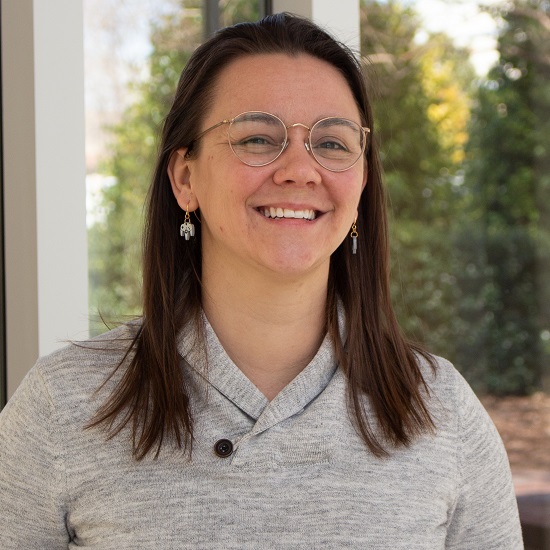
Christina Singer knew from a very young age that she wanted to be a designer. The idea of graphic design was one that always sparked a sense of joy and creativity in her, and she knew by the time she was in high school that she was hooked on the craft.
“I already knew that that was an option for a career path, which is unusual for people, so I was lucky in that regard," she says. "After my first year in college I changed my major to graphic design." Singer earned her BFA in Art concentrating in Graphic Design at East Tennessee State University and later received her MFA in Art concentrating in Graphic Design at the University of Florida.
Since fully diving into the world of graphic design, Singer has worked for a multitude of companies, non-profits, and human rights organizations. Her commitment to helping others has become bonded together with her love of design.
"My first job out of undergrad was at Eating Well Magazine. I was the associate art director. It was basically making magazines for people to improve their health. The content of that was something I related with. I just kind of thought 'well if I'm going to be designing something, I want it to be something that's gonna help people.’"
Both of her passions truly came together during her time living in Busan, South Korea, from 2013-2014. She began looking into the move while she was working a job in Vermont.
“So when I was in Vermont I would take all my vacation days and go to Korea, kind of like testing out if I liked it, but also that's where my girlfriend at the time lived. She was Korean and we met in undergrad, and so I wanted to visit her. So for me, it started as a very personal connection. What I missed, though, was designing. So I was teaching English, but I would find myself going to cafes, designing for fun. I did a couple of small jobs for magazines while I was there. I just really wanted to leverage the teaching I was doing for something I really cared about.”
Teaching in South Korea, Singer took notice of the world around her, specifically, how no one would acknowledge North Korea. It was a taboo subject for many, but Singer became further interested in the human rights issues present in North Korea, and how she could help when it seemed no one wanted to have those conversations. This led her to find PSCORE.
“I looked into a non-profit that I could try to do design work with in South Korea that works towards advocating for North Korean human rights,” Singer says, describing PSCORE. “So they have a United Nations consultative status. The two founders are a native North Korean and a South Korean. It’s called PSCORE, which stands for 'People for Successful Corean Reunification.' The ’C’ was how Korean was spelled phonetically before Japan occupied Korea. Just the small things I've been able to do with PSCORE have been rewarding.”

Selections from a series of 30 activism posters for PSCORE street campaign in Seoul designed by Singer.
Singer continues to work with PSCORE, recently helping edit a report, and will soon begin a new design project for them. This next project will focus on the lack of information and communication North Korea has with the rest of the world, as their government has very strict restrictions on all information that enters the country. Based on interviews with 15 defectors who came to South Korea over the last 10 years, Singer will design posters that convey North Korean citizens' lack of access to outside sources and the control of information the government has on them.
“I think sharing drastic images or just even quotes from (the interviews) to South Koreans and tourists as they navigate Seoul, they can hopefully begin to gain a little bit of empathy for the people just above them, just one hour out from Seoul.”
Singer uses her experiences and life knowledge from working with groups like PSCORE in her classroom. She teaches her students to design with meaning, motivating her students to use their talents towards a cause they are passionate about and elevate their work to have greater depth as it has been created with the purpose of helping others. The passion she and her students display to create work that speaks to important causes helps, as Singer says, “keep design human-centered.”